October and November are set to provide exciting coho fishing opportunities for anglers in both the Willamette River and coastal waters. With a record return of coho salmon expected this season, it is the perfect time to plan your fall fishing trips. Here are the details you need to know for a successful coho fishing season, including regulation details, prime locations, and pro fishing tips from Mack's Lure Pro Staffer, Jason Brooks.
Fishing Season and Dates
Willamette River:
Season Dates: October 1 to December 31. Note that coho harvesting in the North Santiam River above Stayton-Scio Bridge begins on October 15.
Coastal Waters (Hood Canal and Puget Sound): Marine Area 12:
Season Dates: September 23 - October 31: Daily limit of six salmon and steelhead, including no more than three adult hatchery coho. Minimum size is 12 inches. Release all salmon and steelhead other than hatchery coho.
Columbia RIver:
Season Dates: Extended - October 31: Retain Chinook and coho from Buoy 10 upstream to the Highway 395 Bridge at Pasco.
Prime Locations to Fish
Willamette River Locations:
- Mainstem Willamette River from the Highway 20 bridge in Albany upstream to the mouth of Coast Fork Willamette.
- Coast Fork Willamette and tributaries.
- Middle Fork Willamette upstream to Dexter Dam.
- McKenzie River upstream to Leaburg Dam.
- Lower Upper Willamette above Willamette Falls, including North Santiam, Tualatin River, and Yamhill River.
Coastal Water Locations:
- Hood Canal: Rivers such as Quilcene, Skokomish, Hama Hama, Duckabush, and Dosewallips are popular spots.
- Coastal bays, estuaries, and inlets where coho gather before heading to rivers.
Regulations You Should Know
Willamette River Regulations:
- Bag Limit: Two adult coho per person per day, with a maximum of 20 per year. Five jack coho per day, which do not require tagging.
- Hatchery vs. Wild Fish: Below Willamette Falls and in streams like the Clackamas, only hatchery coho (identified by the absence of an adipose fin) can be harvested.
Coastal Waters Regulations:
- Daily Limit: Six salmon and steelhead, with a maximum of three adult hatchery coho.
- Minimum Size: 12 inches for all salmon.
Jason Brook's Pro Tips
Timing: The best times to fish are early morning or late afternoon. Key fishing windows often coincide with tide changes, so review tide tables and plan your trips accordingly.
Bait and Lures: Coho are aggressive feeders. Use lures that mimic their primary food sources—herring and anchovies.
Effective Tackle Options for Coho Salmon:
Fishing Techniques for the Willamette River:
- Focus on deep, slow areas off the main current
Fishing Techniques for the Coastal Waters:
- Coho prefer to stay near the surface, even in deep waters. Start trolling at a depth of 25 feet and adjust as necessary.
- Speed: Coho are fast and aggressive; troll at speeds between 2.8 to 3.5 miles per hour.
Finding Bait: Look for sea birds diving for bait, and watch your sonar for bait balls. If you find the bait, you're likely to find the fish!
Topwater Rods: Consider rigging a topwater rod to target coho that come up into the propwash of your boat. Use a mooching weight with a 3 to 4-foot leader to a
UV Wiggle Hoochie or
Size 1/2 ounce Hum Dinger.
Gear Setup: Use a sturdy rod (10-12 feet) with a heavy-action reel. If you don’t have downriggers, a slider with a heavyweight (5-16 ounces) attached to a two-foot buffer to the dodger is effective.
Final Thoughts
October and November present an excellent opportunity for fall anglers looking to catch coho salmon in both the Willamette River and coastal waters. With the anticipated influx of coho this season, we hope you are able to get out and take advantage of this record breaking season.




